What Made The Mellifluous Lexus LFA An Unsuccessful Legend?
The Lexus LFA was an embodiment of performance and craftsmanship and hands down it was “one of the best-sounding cars on the planet to this date. The LFA symbolizes the ‘Apex’ of the LF, which was the performance series from Lexus. Unfortunately despite all that, the car was not sold well during its production period due to several reasons.
Published May 10, 2024

Lexus LFA Performance and Specifications
The Lexus LFA was a performer, widely regarded as one of the most exhilarating sports cars to drive. The high-revving V10 engine produces a unique and unmistakable exhaust note that is delightful to hear.
https://www.youtube.com/watch?v=rhn_vnQJ10E
Midnight Lexus LFA by 458 Destroyer
Considered to be one of the best-sounding cars ever made, Lexus achieved the feat by partnering with Yamaha, which also specializes in audio systems and was responsible for tuning the note on the naturally aspirated V10 under the hood.
| Lexus LFA | Specs |
|---|---|
| Price | $379,575 |
| Powertrain | 4.8L V10 |
| Horsepower | 552 hp @ 8,700 RPM |
| Torque | 354 lb-ft @ 6,800 RPM |
| Transmission | 6-speed automated manual |
| 0-60 MPH | 3.6 seconds |
| Top Speed | 203 mph |
Specs taken from Wikipedia
The LFA's lightweight build and carbon fiber-reinforced plastic (CFRP) monocoque chassis make it very nimble and responsive, with accurate handling and great balance in turns. The suspension is adjustable, allowing drivers to customize the handling to their liking.
What’s special about its design and Interior?
 Lexus LFA - Source: Carlos Almendarez from San Francisco, USA, CC BY 2.0, via Wikimedia Commons
Lexus LFA - Source: Carlos Almendarez from San Francisco, USA, CC BY 2.0, via Wikimedia Commons
The appearance of the Lexus LFA is eye-catching and aerodynamic, with sharp lines, a mesh grille, and a dramatic rear diffuser. Its low, broad stance and streamlined profile give it a strong, athletic appearance that is both useful and visually appealing. The design of the LFA is both beautiful and functional, contributing to its high-performance capabilities and distinguishing it from other sports vehicles.
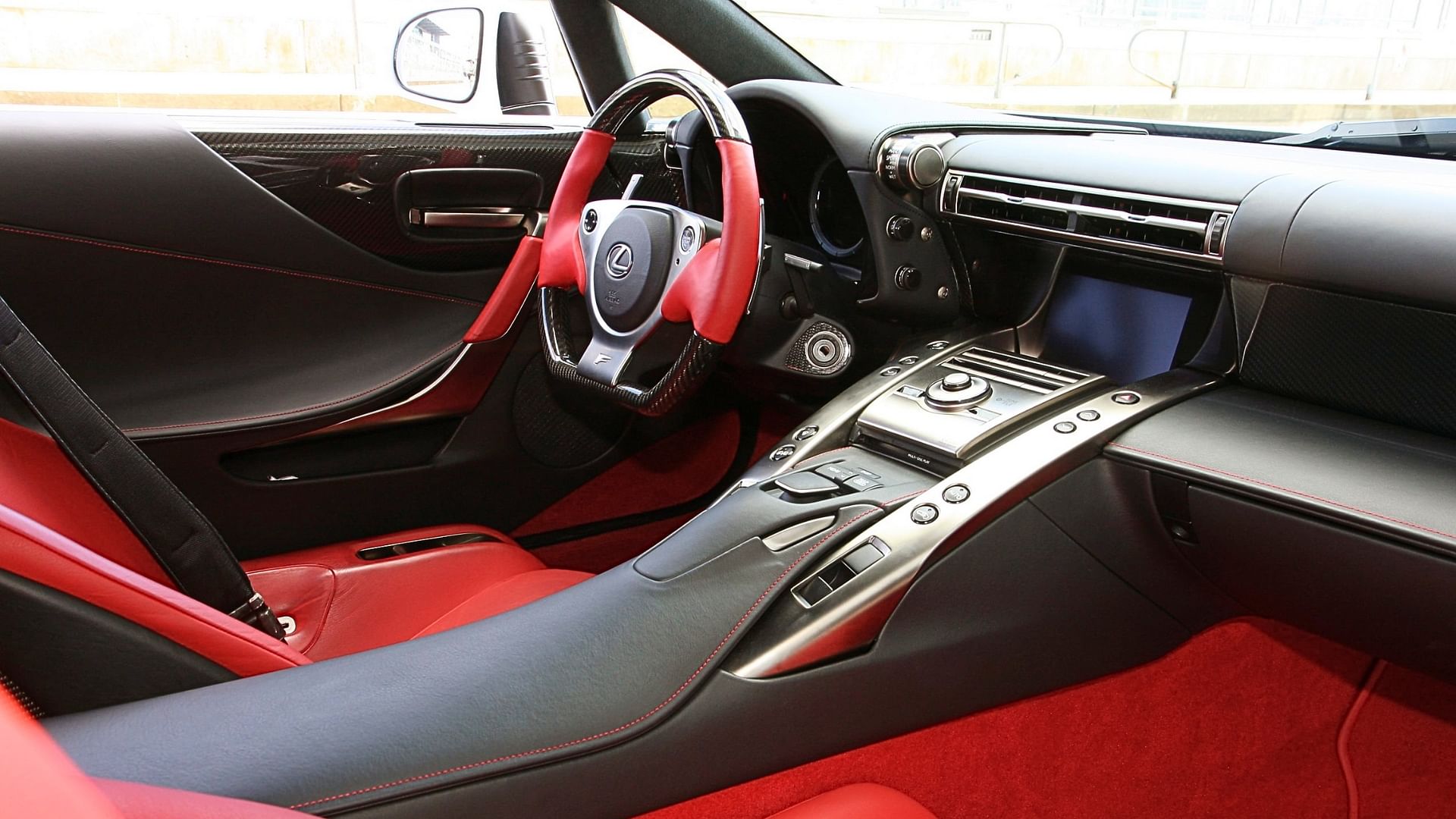 Lexus LFA Interior - Source: Lexus Media
Lexus LFA Interior - Source: Lexus Media
The inside of the Lexus LFA has been created for the ultimate driving experience, with a driver-focused layout and comfortable seats. The leather-wrapped steering wheel has paddle shifters, while the dashboard has a digital display and a central touchscreen. The interior of the LFA is likewise fully configurable, with a variety of color and material options available to suit individual preferences.
Why did the Lexus LFA not sell?
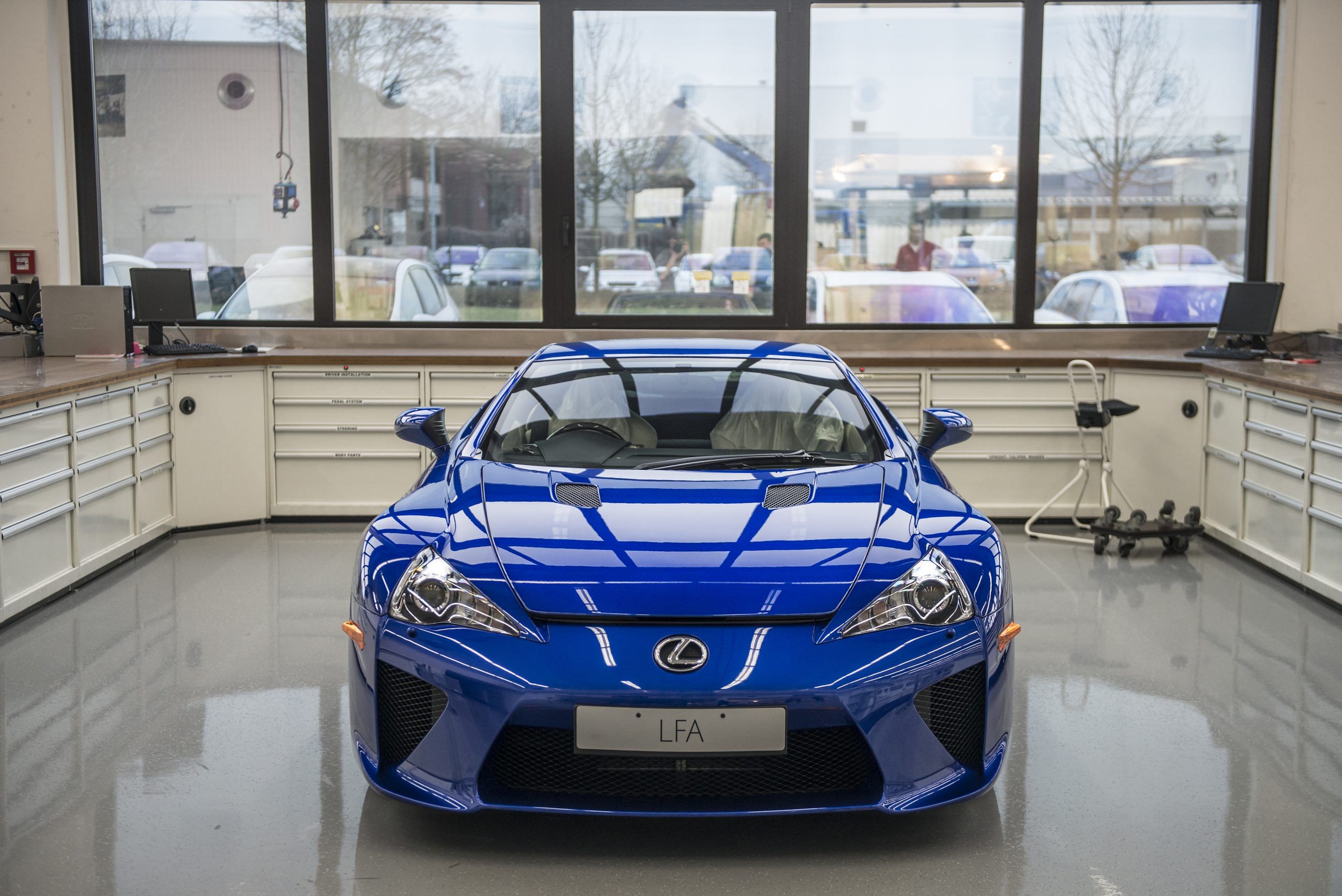 Lexus LFA - Source: Lexus Media
Lexus LFA - Source: Lexus Media
The LFA was a high-performance and visually stunning vehicle, it was unable to break through in a highly competitive and crowded sports car market. Lexus put out 500 units of LFA and after more than a decade of the production, the final car was sold to Australian Toyota dealer in June 2023. The car still is embellished as a display piece as hasn't been able to find an owner. The dealership had to register it to meet the 1 July 2023 deadline of the transition between the old Motor Vehicle Standards Act and the new Road Vehicle Standards Act. Currently, a good condition used Lexus LFA in the States holds a value of upward $600,000. All things said, here are some of the reasons that consequently lead to the lower sales figure for the LFA.
5. Launch Timing:
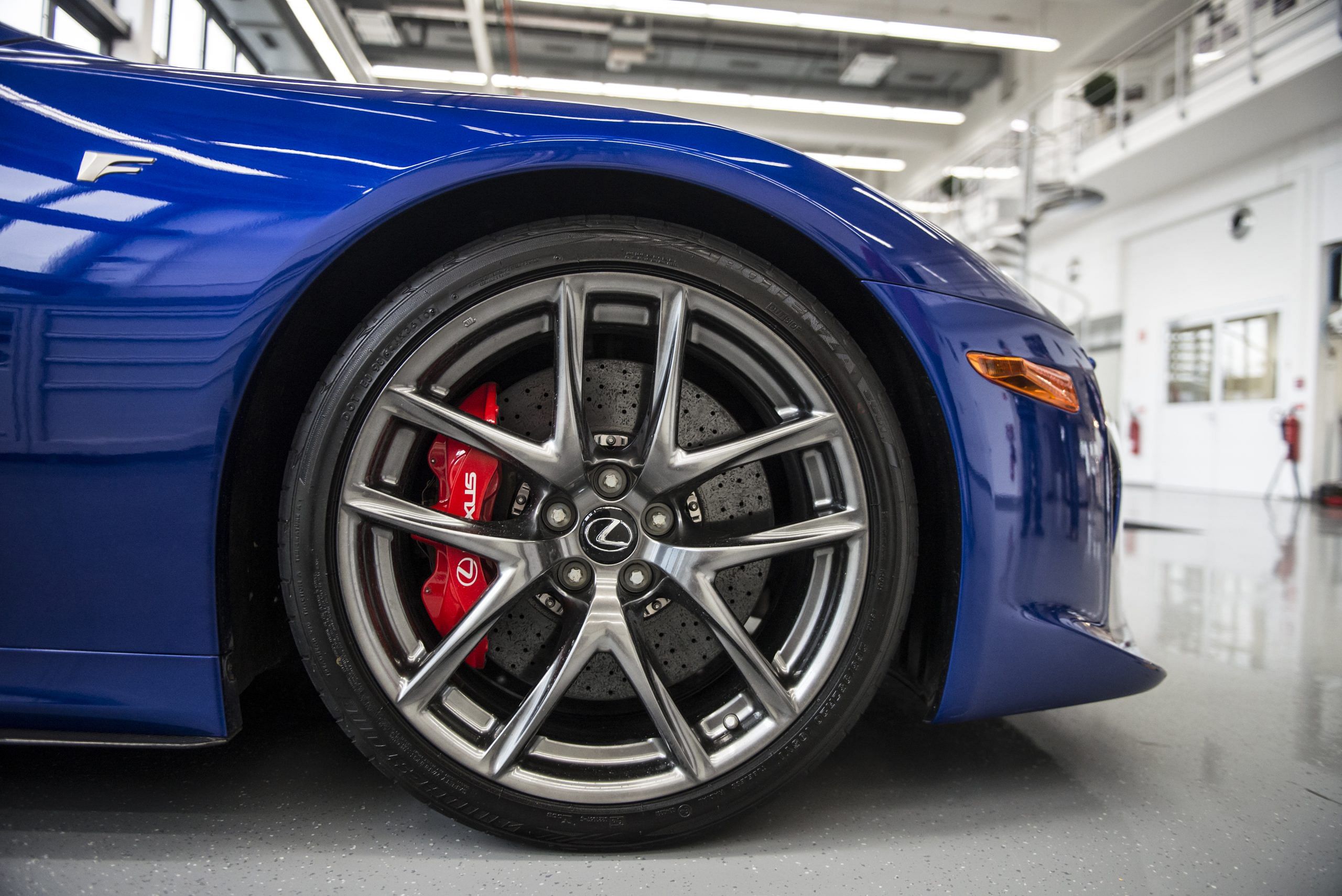 Lexus LFA Wheels - Source: Lexus Media
Lexus LFA Wheels - Source: Lexus Media
The LFA was considered a dream project for Toyota as they never built a full-fledged supercar ever. Since this was a big deal, Toyota ensured that they made the car available to the public only once they were sure that it was perfect. This meant that the car spent a lot of time in RnD, almost 10 years to be specific. By the time LFA’s production model was unveiled, the market had already seen newer and much more advanced cars.
4. High Price & Brand Image
The Lexus LFA was priced at over $375,000, which was considered one of the most expensive sports cars on the market at the time of its launch. Adjusted with the inflation, the sticker price in 2024 should sit somewhere north of $500,000 which is quite exorbitant. This high price made it inaccessible to most consumers and limited the number of potential buyers.
 Lexus LFA Rear - Source: Lexus Media
Lexus LFA Rear - Source: Lexus Media
While the LFA was a high-performance vehicle that justified its price tag, the cost was simply too high for most consumers. The reason for its failure was the brand itself as nobody wanted to pay over $375,000 for a Lexus, which ultimately is a Toyota. A Japanese car supercar slotted with a price tag more than the alternatives from Sant'Agata Bolognese or Maranello. This limited the potential market for the car and made it difficult for Lexus to sell enough units to make the project profitable.
3. Limited Production:
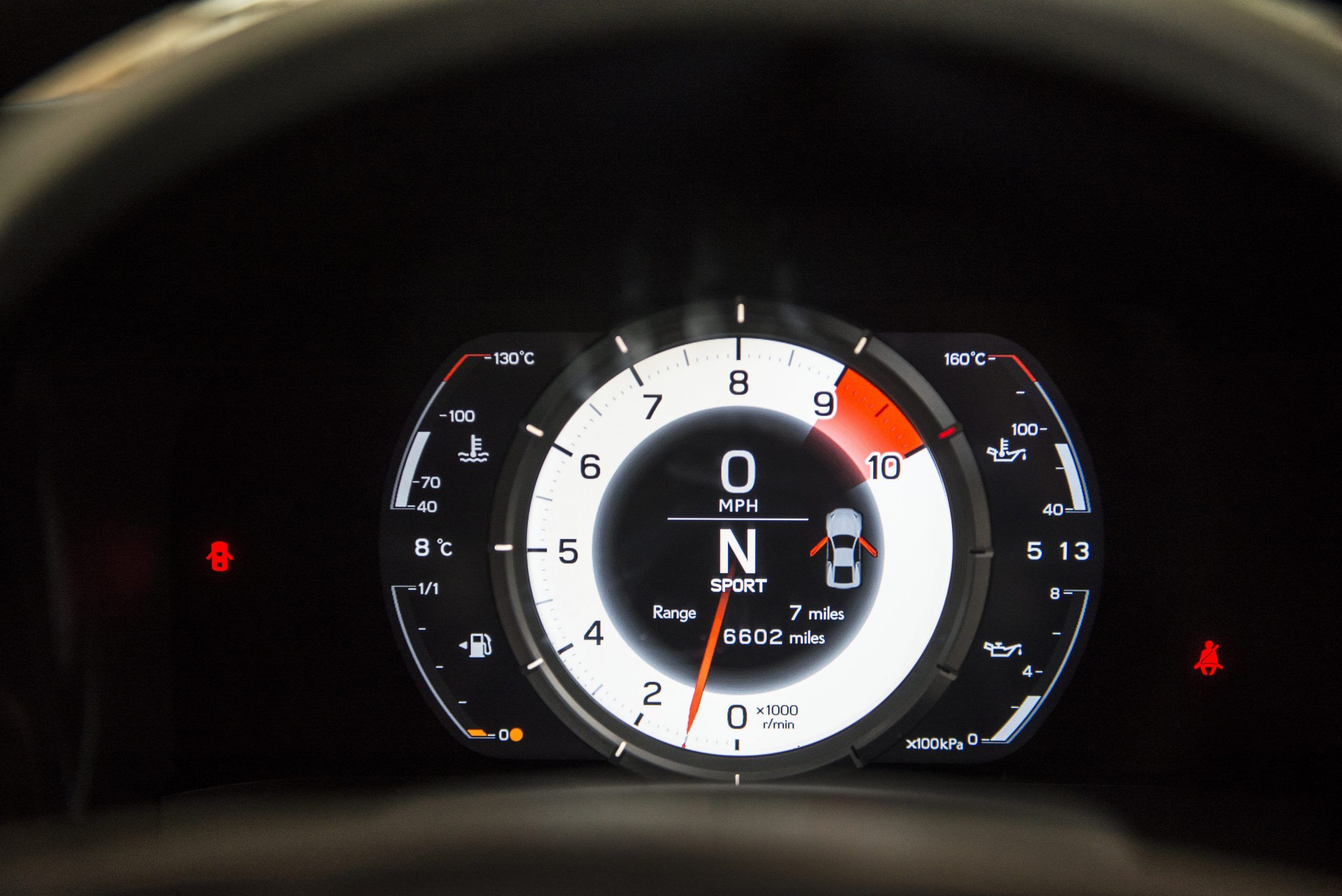 Lexus LFA Instrument Cluster - Source: Lexus Media
Lexus LFA Instrument Cluster - Source: Lexus Media
The LFA was produced in limited quantities, with only 500 units being made. This exclusivity made it a coveted item for car collectors and enthusiasts but also limited its market reach. With such a small number of units being produced, the LFA could not achieve the economies of scale that would have made it more affordable for consumers. Additionally, the limited production run meant that the LFA did not receive the kind of marketing and advertising support that would have been required to reach a wider audience.
2. Competition:
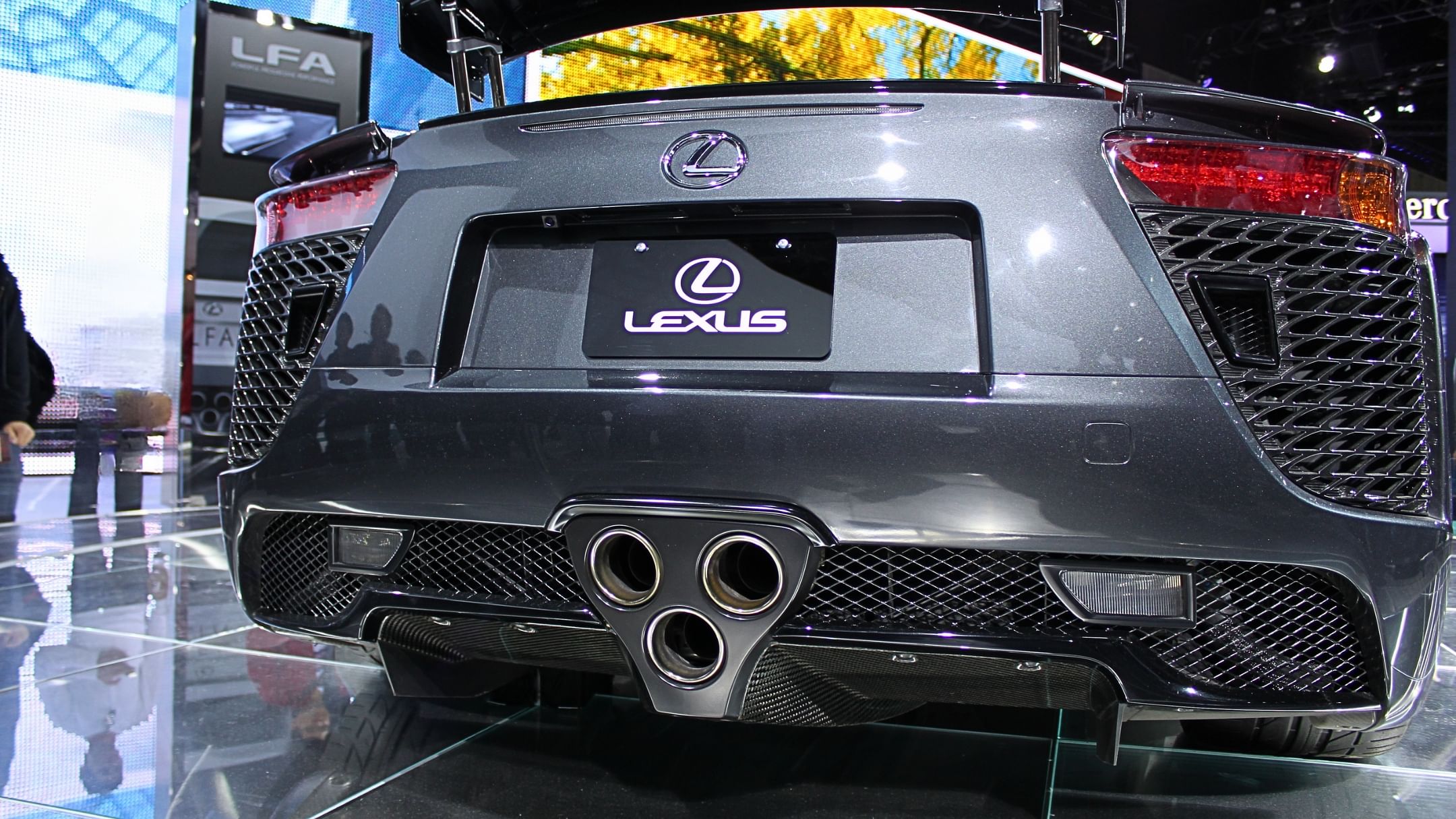 Lexus LFA Exhaust - Source: Hemant Bedekar, CC BY 2.0, via Wikimedia Commons
Lexus LFA Exhaust - Source: Hemant Bedekar, CC BY 2.0, via Wikimedia Commons
The sports car market is highly competitive, with many other high-performance options available at lower price points. The LFA faced stiff competition from other brands, such as Ferrari, Lamborghini, and Porsche, which had established reputations in the sports car market.
These brands also had more extensive dealership networks, better marketing, and established customer bases. This made it difficult for Lexus to compete on price, performance, and brand recognition.
1. Lack of Marketing:
 Lexus LFA Nürburgring Package at the 2011 Geneva Motor Show - Source: Autoviva from Portugal, CC BY 2.0, via Wikimedia Commons
Lexus LFA Nürburgring Package at the 2011 Geneva Motor Show - Source: Autoviva from Portugal, CC BY 2.0, via Wikimedia Commons
The LFA was not marketed as aggressively as some of its competitors, which limited its exposure and visibility among potential buyers. The limited production and high price also made it less attractive to dealers, who may not have had the incentive to market it as aggressively. This lack of marketing support meant that the LFA did not receive the kind of media attention and buzz that would have helped to generate interest and demand.
Write a comment
Comments
No Comments Yet






